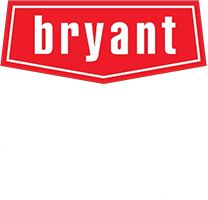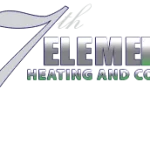Knowing the signs can save you money, improve your health, and ensure year-round comfort.
As a homeowner, you rely on your heating, ventilation, and air conditioning (HVAC) system to keep your family comfortable through Boise’s distinct seasons—from hot summer days to freezing winter nights. But like any major appliance, your HVAC unit has a finite lifespan. Continuing to operate an aging, inefficient system not only compromises your comfort but can also lead to surprisingly high energy bills and poor indoor air quality. The decision to invest in an HVAC system replacement is significant, but understanding the warning signs helps you plan ahead and make a choice that enhances your home’s health and value for years to come.
This guide is designed for discerning homeowners in the Treasure Valley who value long-term solutions and a healthy living environment. We’ll explore the key indicators that your system is failing, the benefits of modern HVAC technology, and what to expect during the replacement process.
5 Telltale Signs Your HVAC System Needs an Upgrade
1. Your System is Over 10-15 Years Old
The most straightforward indicator is age. Most furnaces have a lifespan of 15-20 years, while central air conditioners typically last 10-15 years. If your system is within or past this range, it’s operating on borrowed time. Even if it seems to be working, older technology is inherently less efficient, meaning you’re spending more on energy than you need to. Proactively replacing an old unit prevents an inconvenient and costly emergency breakdown during a heatwave or cold snap.
2. Soaring Energy Bills
Have your utility costs been climbing steadily without a change in your usage habits? As HVAC components wear down, they lose efficiency and must work harder to heat or cool your home. This increased effort translates directly into higher energy consumption. A new, high-efficiency system can significantly lower your monthly bills, often providing a return on your investment over time.
3. Frequent and Costly Repairs
An occasional repair is normal, but if you’re calling for heating repair in Boise every winter or scheduling AC repair services each summer, it’s a red flag. A good rule of thumb is the “50% rule”: if the cost of a repair is close to half the value of a new system, replacement is the more financially sound option. Pouring money into an aging unit is often a losing battle.
4. Inconsistent Temperatures and Poor Comfort
Are some rooms in your house too hot while others are too cold? Do you constantly adjust the thermostat? Inconsistent heating and cooling are signs that your HVAC system can no longer distribute air effectively. This could be due to an improperly sized unit or deteriorating performance. Modern solutions, like an HVAC zone system, can solve this problem by providing customized temperature control for different areas of your home.
5. Worsening Indoor Air Quality
An aging HVAC system can struggle to manage humidity, leading to mold or mildew growth in the ductwork. It can also fail to filter out dust, pollen, and other airborne contaminants effectively. If you’ve noticed an increase in dust or family members are experiencing more allergy-like symptoms at home, your system could be a contributing factor. A new system, perhaps paired with a whole-house humidifier or advanced air purifier, can dramatically improve your home’s air quality.
The Benefits of a Modern HVAC System
Replacing your system is more than just a repair—it’s an upgrade to your home’s entire comfort infrastructure. Today’s HVAC technology offers significant advantages over systems from a decade ago.
Enhanced Energy Efficiency
New systems are built to meet much stricter energy standards. A high-efficiency unit, such as an advanced heat pump or a modern gas furnace, consumes far less energy to produce the same (or better) level of comfort, saving you money every month.
Improved Home Health & Comfort
Modern systems offer superior humidity control and air filtration. This creates a healthier indoor environment by reducing allergens, dust, and the potential for mold. Consistent temperature control eliminates hot and cold spots, ensuring every room is comfortable.
Smart Home Integration
Many new HVAC systems are compatible with smart thermostats, allowing you to control your home’s climate from your smartphone. This technology learns your preferences, optimizes energy usage, and gives you ultimate control over your comfort.
Increased Property Value
A new, efficient HVAC system is a major selling point for potential homebuyers. It signifies a well-maintained home and promises lower energy bills and reliable comfort, making your property more attractive on the market.
Did You Know?
According to the U.S. Department of Energy, heating and cooling account for nearly half of the energy used in a typical U.S. home. Upgrading to a high-efficiency HVAC system can reduce your energy consumption for heating and cooling by 20% to 50%.
Choosing the Right System for Your Boise Home
Residents in Boise, Meridian, and the surrounding communities need a system that can handle our diverse climate. From triple-digit summer heat to snowy winters, your HVAC needs to be robust and flexible. When considering an HVAC installation, a professional consultation is key. A technician will perform a load calculation to ensure your new unit is properly sized for your home—a system that’s too big or too small will struggle with efficiency and performance.
Regular upkeep is also crucial for protecting your investment. Our HVAC maintenance plans are designed to keep your new system running at peak performance year after year, preventing costly breakdowns and ensuring maximum efficiency.
Ready to Upgrade Your Home Comfort?
Don’t wait for a system failure to compromise your family’s comfort. The team at 7th Element Heating and Cooling is here to provide honest, expert guidance on HVAC system replacement.
Frequently Asked Questions
How long does an HVAC system replacement take?
A standard HVAC replacement can typically be completed in one full day. More complex installations, such as those requiring new ductwork or involving systems like ductless mini-splits, might take longer. We will always provide a clear timeline before any work begins.
What is a SEER rating?
SEER stands for Seasonal Energy Efficiency Ratio. It measures the cooling efficiency of an air conditioner or heat pump. The higher the SEER rating, the more energy-efficient the unit is. Current standards require a minimum SEER rating, but investing in a higher-SEER unit can lead to greater long-term savings.
Should I replace my furnace and air conditioner at the same time?
It is highly recommended. Your furnace and air conditioner share components, like the air handler (blower). Replacing them together ensures that all parts are designed to work in harmony, creating a “matched system.” This maximizes efficiency, reliability, and performance. Mismatching a new unit with an old one can strain the system and reduce its lifespan.
Do you offer financing options for a new system?
Yes, we understand that an HVAC system is a significant investment. We offer flexible financing options to help homeowners manage the cost of a new, high-efficiency system. Please contact us to learn more about our plans.
Glossary of Terms
Heat Pump: An all-in-one heating and cooling system. In summer, it moves heat from inside your home to the outside. In winter, it reverses the process, extracting heat from the outdoor air and moving it inside.
HVAC Zoning System: A system that divides a home into different “zones,” each controlled by its own thermostat. Dampers in the ductwork open and close to direct heated or cooled air only to the zones that need it, saving energy and improving comfort.
Load Calculation: A technical analysis performed by an HVAC professional to determine the proper size and capacity of a heating and cooling system needed for a specific house. It considers factors like square footage, insulation, window types, and local climate.
Air Handler: The indoor component of an HVAC system that houses the blower fan, heating and/or cooling coils, and filter. It is responsible for circulating conditioned air throughout the home via the ductwork.

